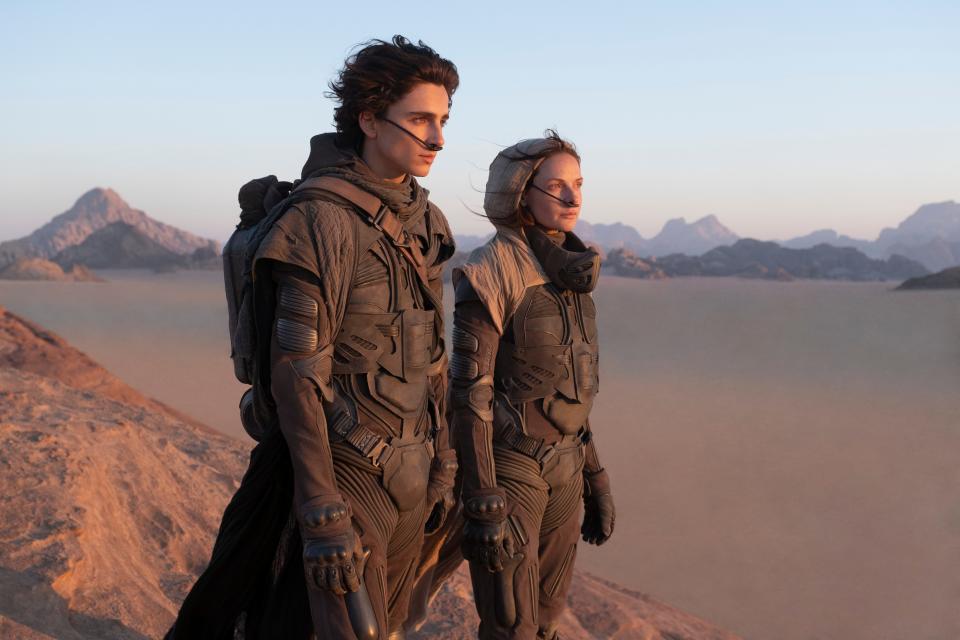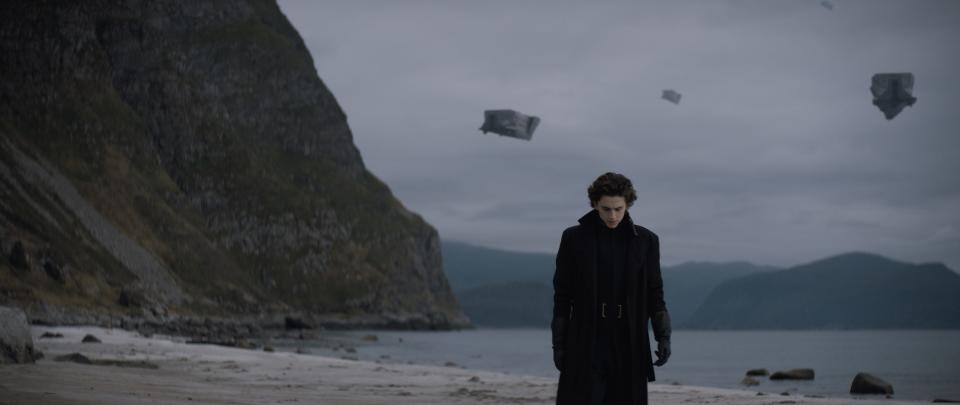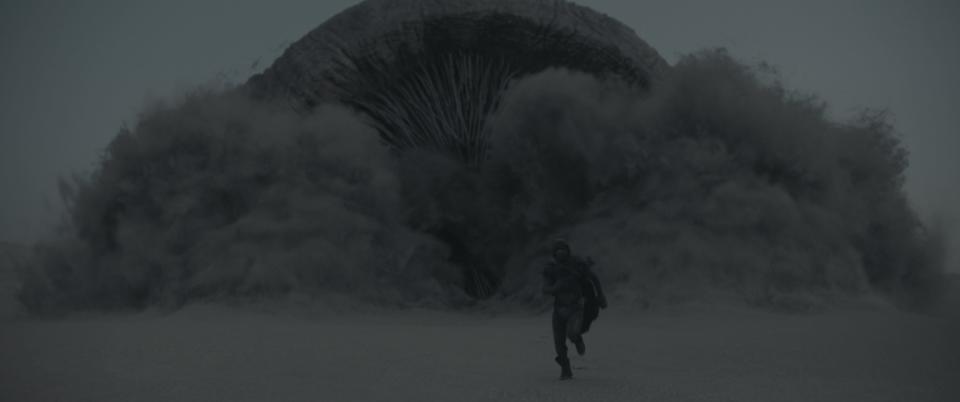What to know from the book 'Dune' before seeing the movie (or how to sound like you've read it)
Do not fear reading “Dune.” Fear is the mind-killer.
Frank Herbert’s “Dune” has a reputation, even among serious readers, for being dense and difficult to follow. The 1965 science-fiction classic, and winner of the Hugo and Nebula awards, is a doorstop of a book (my copy clocks in at nearly 700 pages), thick with unfamiliar terminology, elaborate world-building and high-minded concepts. David Lynch’s nigh-incomprehensible and unpleasant 1984 film adaptation likely didn’t help matters much.
An unread copy of “Dune” haunted my shelf for years before the prospect of a good movie adaptation finally goosed me into action. Director Denis Villeneuve is a powerhouse cinematic sci-fi filmmaker; if he could make a sequel to “Blade Runner” 35 years later as inexplicably awesome as “Blade Runner 2049,” there’s a good chance he can crack the code and successfully adapt “Dune” for the big screen.
Movie review: 'Dune' is a mixed bag of eye-popping sci-fi, lackluster storytelling
I decided if I was ever going to read “Dune,” now was the time.
As a “Dune” skeptic, I am here to tell you that the book is both worth the effort and really not all that hard to understand once you give yourself over to the experience. If you could figure out muggles, Quidditch and horcruxes when reading “Harry Potter,” then you can handle “Dune.”
Here’s what to know before reading (and watching) “Dune” – or how to sound like you already have.

What is ‘Dune’ about, anyway?
The set-up for “Dune” is a good old-fashioned power struggle. The tale is set on Arrakis, an unforgiving desert planet hostile to life. This inhospitable wasteland shouldn’t be worth the trouble it takes to survive it except that it produces spice, or melange, an addictive drug that produces heightened awareness and extends life. A commodity as valuable as spice brings out the daggers in this interstellar feudal society in which noble houses are assigned planetary fiefdoms.
House Atreides is granted stewardship of Arrakis and its spice. House Harkonnen doesn’t like House Atreides. Cue conflict.
More: 'State of Terror' tackles misogyny, Hillary Clinton's nightmare and 'Trump-like' administration
Of course, “Dune” is a much richer, more layered story than that simple summation suggests. Arrakis is also fraught with religious strife; legends and prophesies abound and are used to exploit and control the people in ways that intersect with politics, technology and ecology.
Herbert is also exploring the appeal, and dangers of, heroes and messianic figures and the control they wield over human hearts and minds.
It's also key to note that Herbert wrote "Dune" smack in the middle of the psychedelic era, when many writers (Ken Kesey, Hunter S. Thompson and Timothy Leary among them) explored the expanded consciousness of hallucinogenic experiences. The novel's use of spice is a lot more interesting in this context.
Meet the main players

Duke Leto Atreides (played in the movie by Oscar Isaac): House Atreides is headed by Duke Leto, a relatively benevolent ruler who at the start of “Dune” is given control of Arrakis. He senses his assignment is a trap, but he has no way of rejecting it. Arrakis, he will soon discover, is an especially inhospitable place to men with good intentions.
Lady Jessica (played by Rebecca Ferguson): Duke Leto’s official concubine, a wife in all but title, and mother of his only son. Lady Jessica is a powerful woman, a member of the Bene Gesserit, a pseudo-religious sisterhood. Many call her a witch, and she has trained her son in the Bene Gesserit way, which is usually closed to males.

Paul Atreides (played by Timothée Chalamet): The son of Duke Leto and Lady Jessica and the story’s main character. He is a tender 15 years old, raised by his mother as a male Bene Gesserit, and he’s got a whiff of destiny about him: Many believe him to be the prophesied Kwisatz Haderach, a Messiah-like superbeing who can see all possible futures. Paul is burdened by his destiny of being “the one” because he can see the future, he knows the cost that comes with his prophesied rise to power.
Baron Vladimir Harkonnen (played by Stellan Skarsg?rd): The Baron rules a rival house and is, for all intents and purposes, the story’s villain. Ruthless and cunning, he wants to use this moment as an opportunity to put an end to his longstanding feud with House Atreides – by putting an end to House Atreides itself. He’s a grotesque figure, corpulent and hedonistic, and (in a fatphobic flourish) has to use anti-gravity devices to support his extreme weight.
What's with the weird nose tubes and blue eyes?
The Fremen are a hardy people who’ve adapted to survive Arrakis' harsh desert environment. They’ve inhabited the planet for thousands of years and are essentially natives, and are regarded by the moneyed elite as savages.
Much of their culture revolves around the conservation and use of water, the planet’s most precious resource. To survive the environment, Fremen often wear stillsuits – sweatboxes, essentially, which preserve and recycle the body’s moisture. (If you wondered what the deal is with all the tubes in people’s noses in the movie trailer? That’s the deal.) Water is so precious, spitting is a sign of respect in Fremen culture, and when a person dies, their water is reclaimed: “The flesh belongs to the person, but his water belongs to the tribe.”
Those ultra-blue eyes some characters have, the ones that seem to glow? That’s from spice exposure and addiction.

Among the Fremen is Chani (played by Zendaya), a beautiful young woman and Paul’s eventual love interest. When they first meet, Paul recognizes Chani instantly from his visions of the future.
More: 20 fall books we can’t wait to read by Katie Couric, Billy Porter, Jonathan Franzen and more
What’s this about sandworms?

Remember the monsters from “Tremors”? They’re like that, but bigger. Much bigger. These murderous beasts are essential to the production of spice, respond to vibrations in the sand and bare fearsome crystalline teeth the Fremen fashion into weapons.
Why wouldn’t you want to read a book with sandworms in it?
This article originally appeared on USA TODAY: 'Dune' for dummies: What to know from the book before seeing the movie
